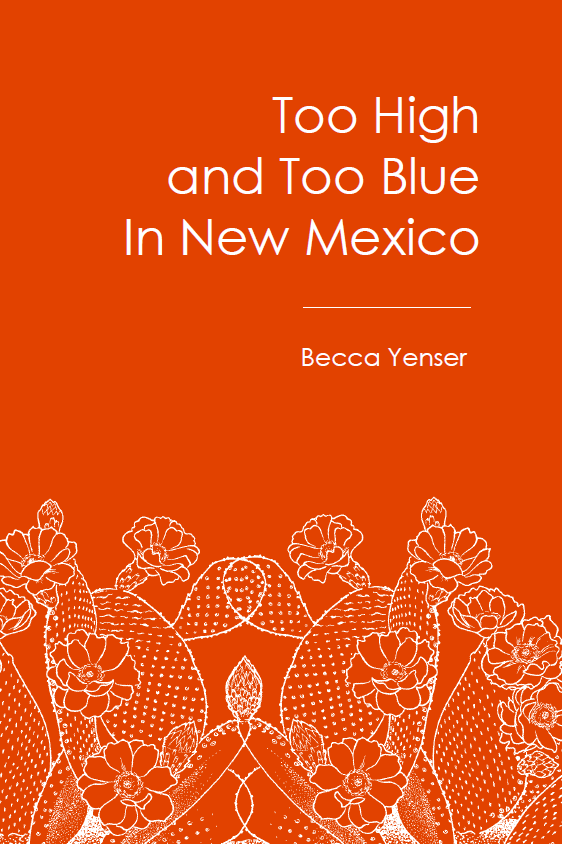
(dancing girl press & studio, 2018)
REVIEW BY GABINO IGLESIAS
—
Nothing compares to hearing about a book and quickly finding a mind-blowing excerpt. That’s exactly what happened to me with Becca Yenser’s Too High and Too Blue in New Mexico. I read a single poem and knew I had to devour the rest and write about them so others could discover the power in Yenser’s words. Here’s the gem that opens the book, the tiny marvel that got me hooked, “How To Forgive In the Desert”:
First, attach yourself to the sky.
Go to the furthest edge of city: violet,
Starstruck, closer to god. Not everyone
Has the heart for it. Some hearts are less red.
Find yourself a cloud kingdom. Don’t
Come down easily, stay up in that thin air.
Don’t think about how you can’t breathe.
People have not breathed here for 11,000 years.
Second, try to remember why you’re here.
Slick rock playground. These are hippos
On their sides. There is never any water. Arroyo.
Say arroyo over and over until your throat is a canyon.
Third, pray to the creatures, especially the Whiptail
Lizards whose backs are lined like cucumbers.
Birds will come and go. Fine-dusted worries will land on your toes;
Coarser planets, in your hair. Running will result in headache.
Please, do not run.
Remember: You will never be able to see the plateau and the canyon.
At the same time. When you are walking one way, you
Will only remember what is behind you. When you look
Behind, you will only guess what lies ahead.
You do not know who you are anymore.
Now drive home. Shudder in the kitchen.
Watch him eat cold cereal as you try to explain
Your tiny heart; the handfuls of stones in your pockets.
That should be enough to get you to read it. However, this is a review, and that means I have to keep going. Too High and Too Blue in New Mexico is extremely short, so don’t expect a long review, but the magic in its pages is worth writing about. Coming in at just 15 pages, this is more a snack than a meal, but its length doesn’t detract from its strength. This collection is full of feelings, packed with illuminating words that show us the poet’s inner dialogue, desires, and struggles, and pulsating truths and questions that range from the personal to the universal. It also chronicles a journey and celebrates different places. Lastly, it speaks of a communion between the poet and the world around her, between the writer and nature, that is stunning:
Kingcup, Desert Cholla, Prickly Pear,
Pincushion or Spiny Star Cactus:
I wanted to pull up all the desert plants
From their roots, hairy and mad;
To keep a book of their deaths.
Yenser understands that there are no dividing lines between beauty and melancholy, love and pain, perpetual motion and the desire to return to the past. This wonderful collection reflects that knowledge. The poems in this book celebrate the poet’s life, but they do so in a way that communicates to the rest of us that there is plenty to celebrate out there; it’s just a matter of going our and finding it. I found some of that beauty in these pages.
—
Gabino Iglesias is a writer, journalist and book reviewer living in Austin, Texas. He is the author of Zero Saints and Coyote Songs. He is the book review editor for Pank Magazine, and a columnist at LitReactor. You can find him on Twitter at @Gabino_Iglesias.
![[PANK]](https://pankmagazine.com/wp-content/themes/pank/assets/images/pank-logo-large.png)
